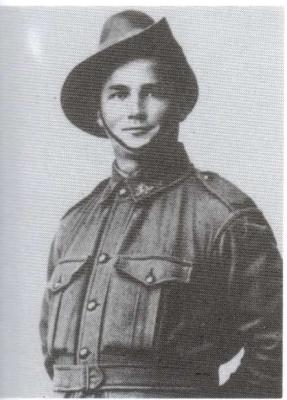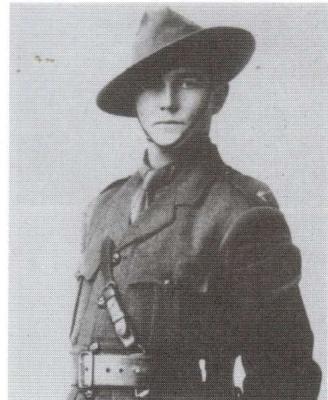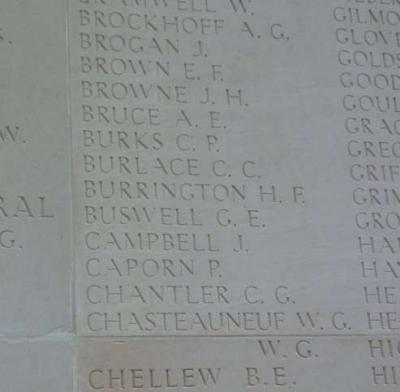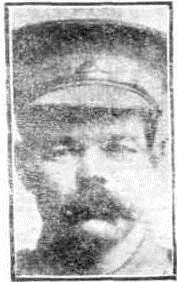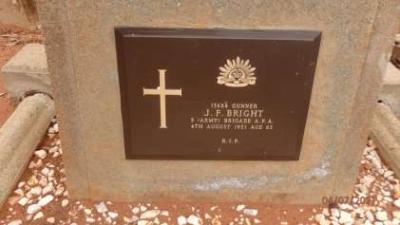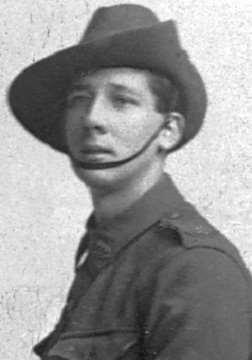Not Forgotten, 2896 Sergeant Thomas Montague DAVIES, 51 Battalion AIF, World War 1
Commemoration of the military service of 2896 Sergeant Thomas Montague Davies, 51 Battalion AIF, died of wounds 26 April 1917.
Private Thomas Montague Davies, listed on the war memorial as M. Davies, was a farmer from Woodlands Farm in Benjaberring, born in Casterton in Victoria. At the time of enlistment both his parents were deceased and his next of kin was listed as his brother W.H. Davies who was farming with him in Benjaberring. He enlisted on 11 July 1916 at Perth having served 12 months with the cadets in Northam, embarked for England on H.M.A.T. A8 Argyllshire from Fremantle on 9 November 1916 and was in Codford camp. He proceeded to France on 9 May 1917 and was taken on strength in the 51st Battalion.
Arriving in France on 12 June 1916, the 51st moved into the trenches of the Western Front within a fortnight. It fought in its first major battle at Mouquet Farm in August and September, and suffered casualties equivalent to a third of its strength in both of the attacks it launched, on 14 August and 3 September. After Mouquet Farm, the battalion saw out the rest of the year, alternating between frontline duty, and training and labouring behind the line. This routine continued through the bleak winter of 1916-17.
Early in 1917, the battalion participated in the advance that followed the German retreat to the Hindenburg Line. On 2 April it attacked at Noreuil, a village which had been fortified to delay the Australian advance. Later in the year, the focus of the AIF’s operations moved to the Ypres sector in Belgium. There the battalion fought in the battle of Messines between 7 and 12 June and the battle of Polygon Wood between 26 and 27 September. Another winter of trench routine followed.
With the collapse of Russia in October 1917, a major German offensive on the Western Front was expected in early 1918. The 51st Battalion assisted in the repulse of a large German attack on 5 April, launching a critical counter-attack late in the day. The German threat remained until late April, and in the early hours of ANZAC Day 1918 the 51st participated in the now legendary attack to dislodge the enemy from Villers-Bretonneux.
As part of the German Spring Offensive on the Western Front German
forces using infantry and tanks captured Villers-Bretonneux, near Amiens, from exhausted British defenders on 24 April 1918. The Australian 13th and 15th Brigades were brought forward and in a model of a well-planned and co-ordinated night attack successfully recaptured the town. On 25 April 1918 Monty Davies sustained a gunshot wound to the abdomen at Villers-Bretonneux and was admitted to the 5th Casualty Clearing Station where he died of his wound on 26 April 1918 at the age of 22. He was buried in the Crouy British Cemetery, 10 miles north west of Amiens.
Sergeant Davies was awarded the British War Medal and the Victory Medal. His brother, William Herbert Davies, continued on the farm, Woodlands, in Benjaberring.
Details
Details
When the Great War broke out in Europe in 1914, Dowerin was an isolated farming district, several days travel by horse or by coach from Perth. Over the succeeding four years at least 176 men and one nurse served in the armed forces of the Empire. The names of the men who served can be read on the Honour Roll in the Dowerin Town Hall or can be accessed on the museum section of the Shire of Dowerin website.
Fifty-one men from the district died in the Great War and their names are inscribed on the Dowerin War Memorial which was unveiled on ANZAC Day 1936. Subsequent conflicts have seen more names memorialised and each ANZAC Day their sacrifice is honoured and remembered by the community.
For some years Diane Hatwell had been intrigued by the names on the Dowerin War Memorial. Some were familiar with the families still in the district but some not so. Diane felt It was important for the community that when we said each ANZAC Day “We will remember them”, we had some idea of who and what we are remembering. She set about, to find out who they were, what they were doing in the Dowerin district, and where and how they died. These pages presented through Collections WA represent the current state of this ongoing research and community response.
Open in Google Maps
Nearest geotagged records:
Other items from Dowerin District Museum
- Not Forgotten, 7097 Corporal Wesley John COOKE, 16 Battalion AIF, World War 1
- Not Forgotten, 882 Lieutenant Leonard Charles COOKE MC, 11 Battalion AIF, World War 1
- Not Forgotten, 3132 Private Frank James CARD, 48 Battalion AIF, World War 1
- Not Forgotten, 4758 Private George Edward BUSWELL, 48 Battalion AIF, World War 1
- Not Forgotten, 2838A Private Albert George BROADBENT, 5 Pioneer Battalion AIF, World War 1
- Not Forgotten, 13684 Gunner James Frederick BRIGHT, 3 Field Brigade Ammunition Column AIF, World War 1
- Not Forgotten,4732 Acting Corporal John Livingstone BENNETT, 11 Battalion AIF, World War 1
- Not Forgotten. 200 Private Harold Reeve BEECHEY, 16 Battalion AIF, World War 1, and 1368 Private Christopher William Reeve BEECHEY, 4 Field Ambulance AIF, World War 1
- Not Forgotten. 7682 Private Alfred Edward AINSWORTH, 51 Battalion, World War 1
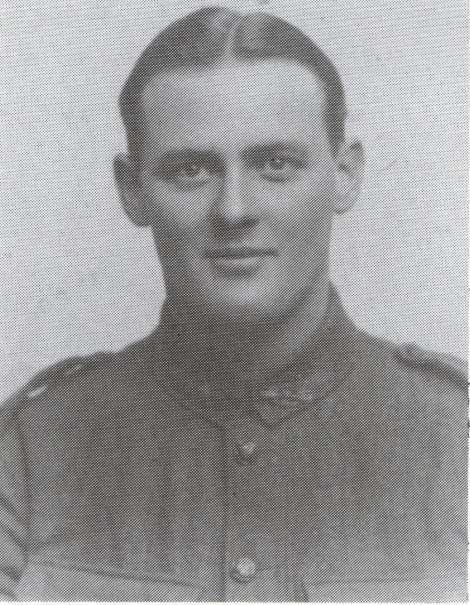
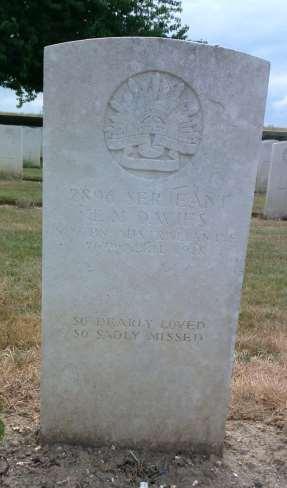
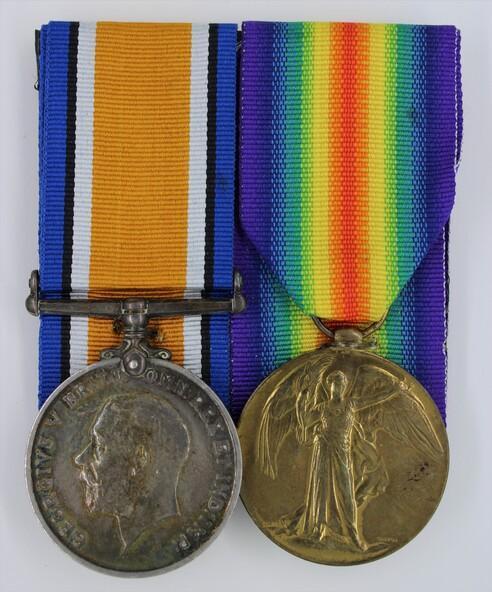
Scan this QR code to open this page on your phone ->

